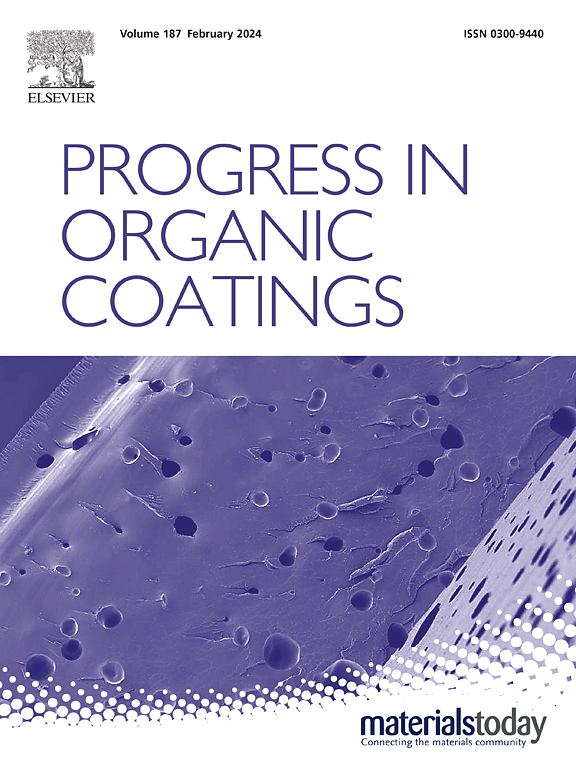UV-catalytic fillers with hydrophilic groups encapsulating hydrophobic groups enhance the corrosion resistance of epoxy coatings in harsh environments
IF 6.5
2区 材料科学
Q1 CHEMISTRY, APPLIED
引用次数: 0
Abstract
In recent years, the impact of filler surface groups on the protective qualities of epoxy resin coatings has garnered significant attention. This study has centered on the hydrophobic modification of mica fillers using fluorosilane (PFDTMS). Subsequently, the photocatalytic properties of titanium black (B-TiO2) and Cobalt tetroxide (Co3O4) were utilized to deposit hydroxyl radicals onto the fluorosilane surface, resulting in a configuration where hydrophilic groups encapsulate hydrophobic groups on the exterior of the filler. Furthermore, the study aimed to evaluate the anti-corrosion and wear resistance of these composite coatings under high-pressure CO2 conditions. After undergoing a 72-hour high-pressure CO2 corrosion test, the EP/UV-F/B-TiO2/Mica/Co3O4 composite coating retained a substantial impedance modulus value of 3.648 × 109 Ω/cm2 at 0.01 Hz, whereas the pure epoxy resin coating exhibited detachment and cracking from the substrate. These observations indicate that the epoxy composite coating, featuring its distinctive hydrophilic-hydrophobic configuration, possesses exceptional long-term corrosion resistance. In conclusion, this research presents encouraging prospects for the development of mica-based, resilient anti-corrosive fillers.

求助全文
约1分钟内获得全文
求助全文
来源期刊

Progress in Organic Coatings
工程技术-材料科学:膜
CiteScore
11.40
自引率
15.20%
发文量
577
审稿时长
48 days
期刊介绍:
The aim of this international journal is to analyse and publicise the progress and current state of knowledge in the field of organic coatings and related materials. The Editors and the Editorial Board members will solicit both review and research papers from academic and industrial scientists who are actively engaged in research and development or, in the case of review papers, have extensive experience in the subject to be reviewed. Unsolicited manuscripts will be accepted if they meet the journal''s requirements. The journal publishes papers dealing with such subjects as:
• Chemical, physical and technological properties of organic coatings and related materials
• Problems and methods of preparation, manufacture and application of these materials
• Performance, testing and analysis.
 求助内容:
求助内容: 应助结果提醒方式:
应助结果提醒方式:


